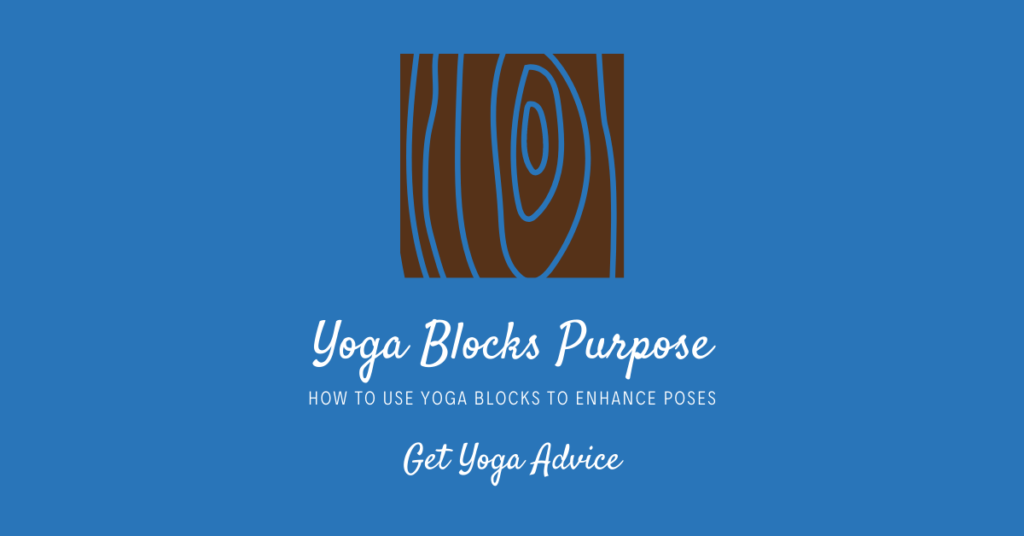There are a lot of people who want to start doing yoga but feel like they waited too long to get started, or they don’t have the flexibility they need to do it effectively. The truth is that you’re never too old or inexperienced to start doing yoga.
A yoga prop is something that you can use for support while you’re building strength and flexibility. One of the most effective props out there is a yoga block.
Contents
Why Use Yoga Blocks
There are several reasons why using a yoga block is beneficial to anyone’s yoga practice, especially beginners.
Yoga blocks are often said to bring the floor closer to you. If a pose calls for you to touch your hands to the ground, for example, and you’re not quite flexible enough to do so, you can reach for the top of a yoga block instead.
Another reason a yoga instructor might recommend a yoga block is to help establish correct alignment, especially when learning a new pose.
Placing the yoga block to support your spine or knees when you’re learning a new asana helps you get a feel for how the pose is supposed to feel. If you keep practicing with the block, eventually you can get the pose exactly right, and you will no longer need its support.
Generally, yoga blocks can help make yoga more accessible for beginners and anyone with an injury or other physical limitation. Whether they’re a temporary fix until you build up the strength and flexibility to do more difficult poses on your own, or an adaptation you need to accommodate you for the long haul, yoga blocks are a great investment.
Types of Yoga Blocks
There are a few different materials to choose from when considering a yoga block. Here are the three most popular.
Foam Yoga Block
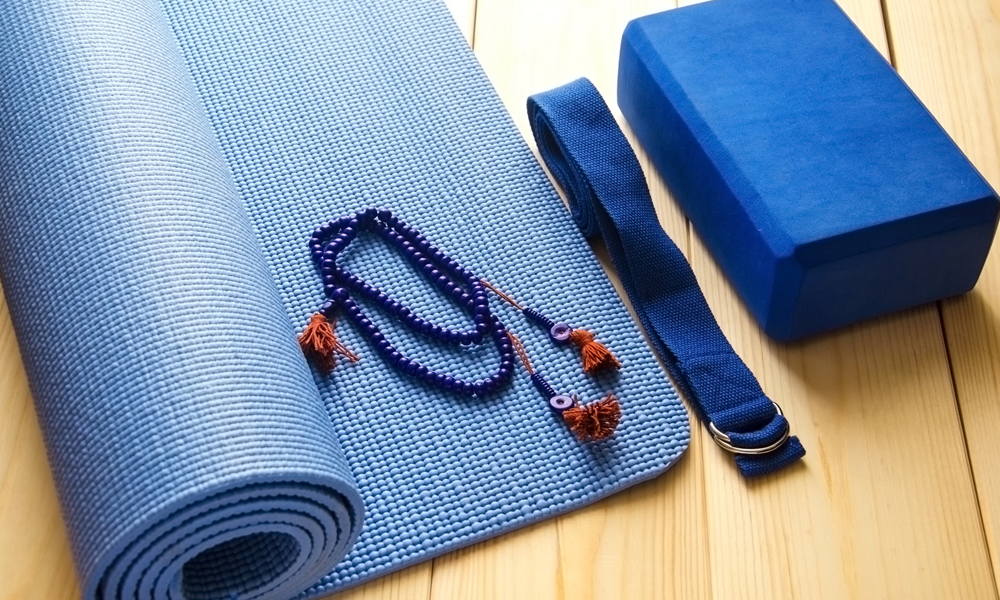
Foam is the most popular material for yoga blocks, primarily because it’s lightweight and easy to carry. EVA foam blocks can take a lot of pressure and maintain their shape but have just a little bit of give that makes them much more comfortable than some of the other options. They’re effective for a seated pose, standing pose, or restorative pose.
This type of block is pretty affordable, even if you choose a high-end option like a Gaiam yoga block. Plus, they’re available in just about any color you can imagine. They’re easy to clean and have a great grip that makes them good for difficult poses.
That said, some people avoid them because they are the least environmentally friendly option. The material can also get dented or scratched easily and doesn’t last as long as cork or wood.
Cork Yoga Block
Cork blocks are a good choice if you prefer an eco-friendly option. They’re made from the bark of the Cork Oak tree, which continues to grow even after the bark is harvested. These blocks are stable and solid.
One of the reasons they’re so popular is that their natural surface has a good amount of natural friction, which makes them easy to hold onto and prevents them from sliding around. They’re non-slip even when they’re wet, making them a great choice for hot yoga.
One downside to cork yoga blocks is that they’re porous, which makes them difficult to clean, and, in time, they’re likely to absorb so much sweat and grime that it damages the integrity of the block. The surface may start to flake and the corners might crumble.
Check out our yoga ball storage guide.
Wood Yoga Block
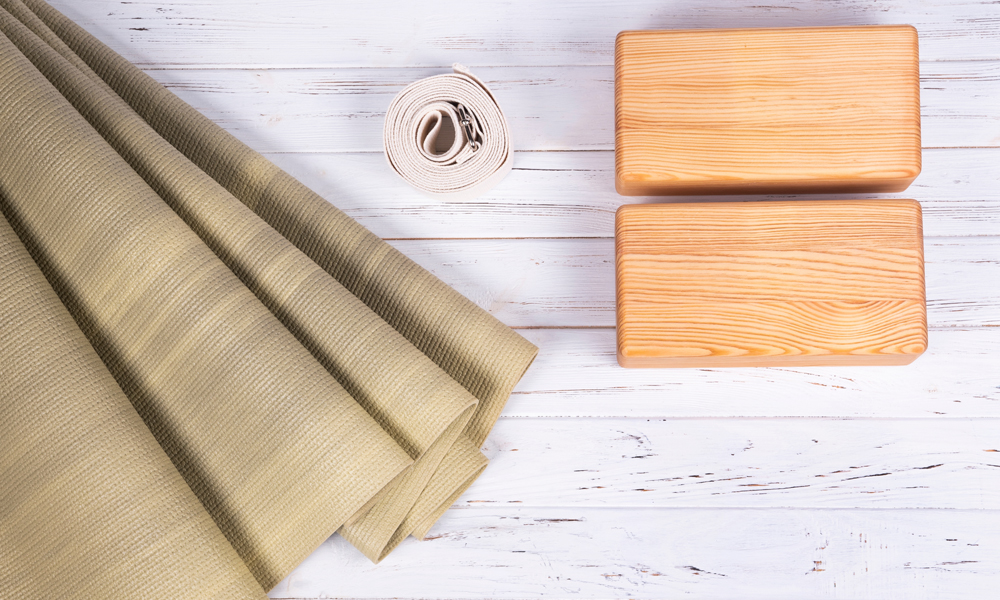
Wooden yoga blocks were the first type available, and they were used long before foam or cork came onto the market. The biggest downside to a wooden block is that they’re the most expensive option, though they are exceptionally durable and last the longest, so they’re worth the investment. Some of them even come with a lifetime guarantee.
Wood blocks are thick and heavy. This provides a lot of stability but also makes them a little awkward to carry with you to yoga class. They’re really easy to clean, but the surface gets wet and slippery, so they need time to dry.
They’re not the best choice for hot yoga, and, because they are so hard, some people find them a bit uncomfortable for restorative yoga, too.
How to Use a Yoga Block
Here are some popular poses that can benefit from using a yoga block:
Triangle Pose
The triangle pose is meant to stretch tight hips, inner thighs, and torso, and you have to pay close attention to your alignment and positioning. Start with your feet spread hips-width apart, standing up straight with your arms at your sides. Spread your feet a little further apart so there are about three to four feet between them.
Turn your right foot to the side at a 90-degree angle and your left foot facing forward. Place the yoga brick by your right foot, then lift your arms parallel to the floor, palms facing down. Inhale, leaning to the right and stretching your right arm down until your hand rests on the yoga block and rotating the left arm so it’s pointing directly at the ceiling.
Keep your body facing forward and your hips and shoulders parallel to the front of the mat. Return to standing, then repeat on the other side.
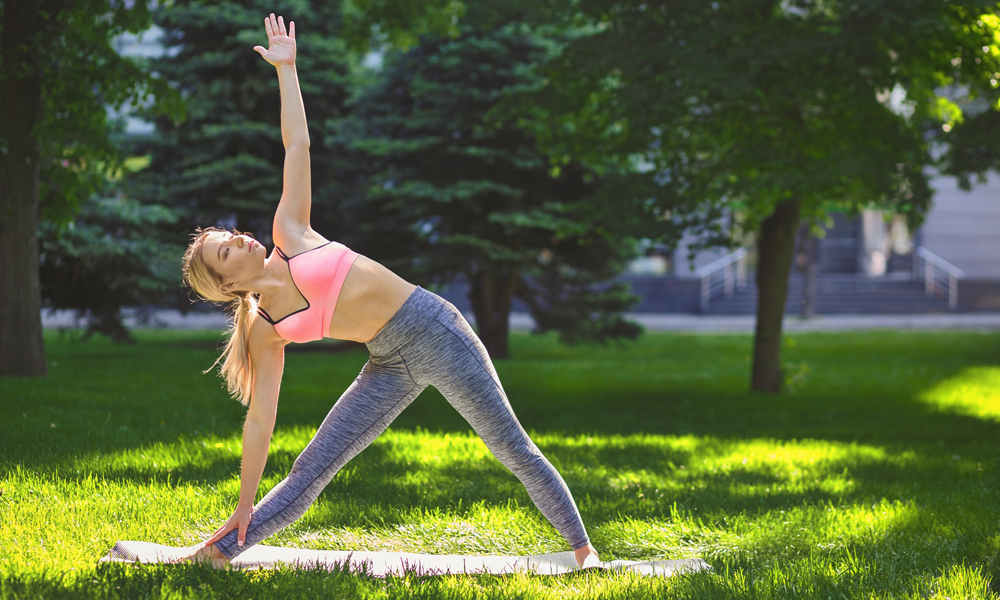
Normally, this pose is done by reaching the hand to the floor, which may be difficult for people who are just starting. With continued practice, you should be able to remove the block and get your hand to the floor.
Child’s Pose
Although this is a resting yoga posture, it’s still a great example of how essential a yoga block is in developing your practice. Get your hands and knees on your yoga mat, keeping your knees spread as wide as the mat and the tops of your feet against the floor with your big toes touching.
Then, lower your body and sit on your legs. Lean forward, spreading your arms out in front of you and trying to touch your forehead to the floor. It will likely take some practice to be able to do so, which is where your yoga block comes in.
Place it in front of you and rest your forehead on it as you hold the pose. As you get more advanced, you can also place a yoga block under each of your hands where your arms are extended to deepen the stretch in your shoulders.
Pigeon Pose
Pigeon pose is a great hip opener and a pose that cyclists and runners love. It’s also another great example of how a yoga block provides support that you need to prevent strain or injury when trying a balancing pose that you might not have the flexibility for.
To do it, begin in a downward-facing dog. Bring your right shin forward, keeping it parallel to the front edge of the mat. Position your right knee so it’s pointing toward your right wrist.
Your left leg should be extended behind you with your toes tucked. Lower your hips slowly, and untuck your toes so the top of your foot is against the ground.
Bend forward and down, either reaching your arms straight out in front of you or crossing your arms, using them as a pillow for your head with your elbows winging out to the sides.
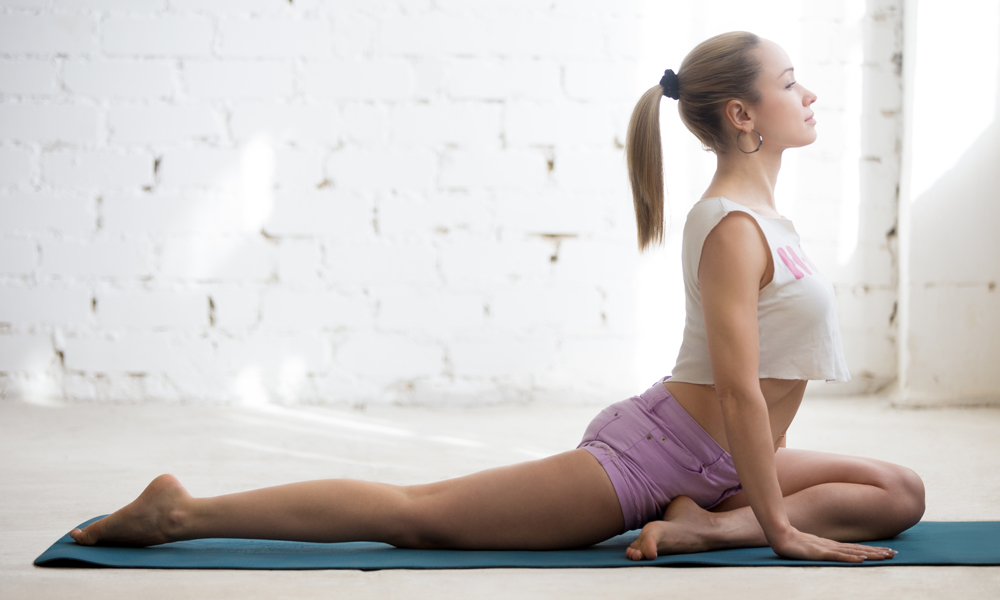
This is a tricky pose, and it’s unlikely you’ll be able to open your hips fully until you get some practice. By bringing the yoga block under the buttock of the bent leg, you give the hip extra support for more stability and protect the tailbone from injury.
Hero Pose
This restorative pose is a classic yoga position and one that’s been used traditionally for meditation and breathing exercises. Kneel on the floor, placing the yoga block between your lower legs, under your buttocks. Keep your inner knees together and your thighs perpendicular to the floor.
Spread your feet apart so they’re slightly wider than your hips with the tops of your feet against the floor. Sit on the yoga block, balancing your weight across your hips. Keep your feet in line with your shins, but allow your thighs to turn in a bit.
Sit up straight, pulling your shoulders back while placing your hands on your thighs. Hold the pose for one minute.
Bound Angle Pose
The bound angle pose is a good choice for tight hamstrings. To do it, start by sitting on your mat with your legs straight out in front of you. If your hips are tight or if you need to improve your flexibility, sit on your yoga block. Then, bend your knees and place the soles of your feet together, pulling them toward your pelvis.
Keep the other edges of your feet against the floor and clasp your hands around the same side ankles. Sit up straight, elongating the spine, and keeping the pelvis in a neutral position. Hold the pose for anywhere between one and five minutes.
Bridge Pose
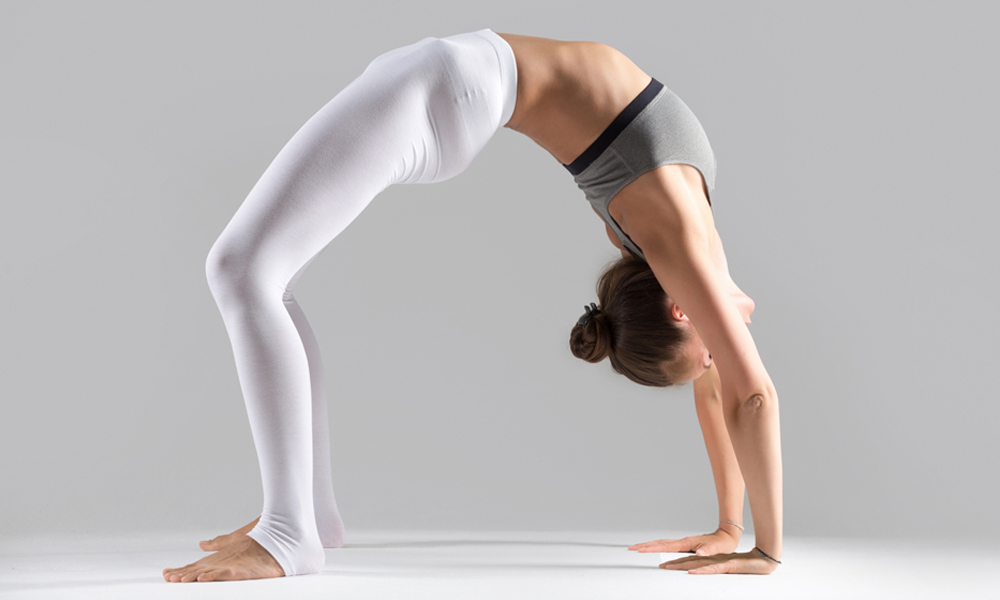
The bridge pose is a great way to stretch the legs, abdomen, and hips, but when you add a yoga block, it turns it into a relaxing, restorative position. Lie on your back, bending your knees with your feet flat on the floor, lifting your pelvis off the ground.
Keep your arms at your sides with your palms on the floor. Elongate the neck and keep your shoulders pressed into the floor. Position the yoga block under your sacrum to give your spine some gentle support as you hold the stretch.
Crescent Lunge Pose
Get into a lunge position with your right leg forward, keeping your right knee directly over the ankle. Drop your left knee and keep the top of your left foot against the floor.
Lift your arms above your head as you inhale. Exhale and deepen the stretch, using stacked yoga blocks under your right thigh to provide support while you hold the pose. Then, repeat on the other leg.
Camel Pose
Start in hero’s pose, then lift your buttocks off of the block and raise yourself onto your knees. Your legs should be about a hip’s width apart, and the tops of your feet should be against the ground. Use two yoga blocks, placing one on either side of your heels.
Elongate your back, bringing your hands to your hips, and then reaching back to rest your palms on the blocks. Your fingertips should be pointing toward your body with your wrists facing the same direction that your toes are pointing. Bend your back, extending your neck and looking up toward the ceiling.
In a standard camel pose, you reach your hands down so the palms of your hands rest on the soles of your feet. This can take some practice and using yoga blocks lets you work on your positioning while improving your flexibility.
Final Word on How to Use Yoga Blocks
Yoga blocks are a simple, effective way to make yoga more accessible for beginners or people with physical limitations. Not only do they bring the floor closer, but they also act as stable support when you don’t have the flexibility or strength required to hold certain poses.
Before you choose a yoga block, determine which material is the right one for you. Foam is lightweight, inexpensive, and easy to take to the yoga studio; cork is extremely eco-friendly but difficult to keep clean; and wood is durable, heavy, and lasts a long time.
Remember, yoga is not a competitive sport – it’s all about you. Anyone can learn yoga, no matter how old you are or what shape you’re in. Props like yoga blocks give you the support you need as a yoga beginner to learn proper alignment and keep yourself motivated so you keep improving.

